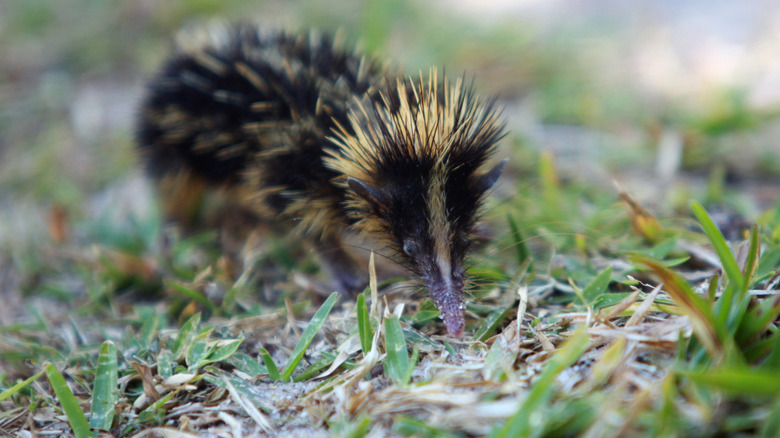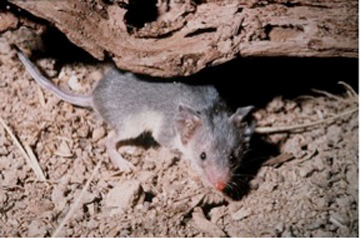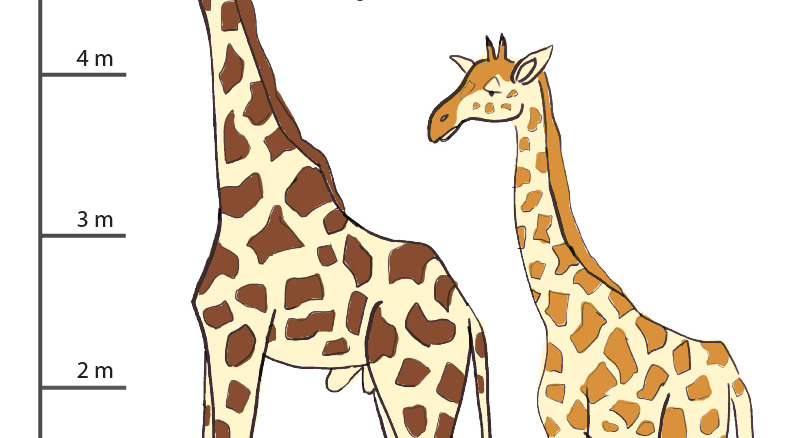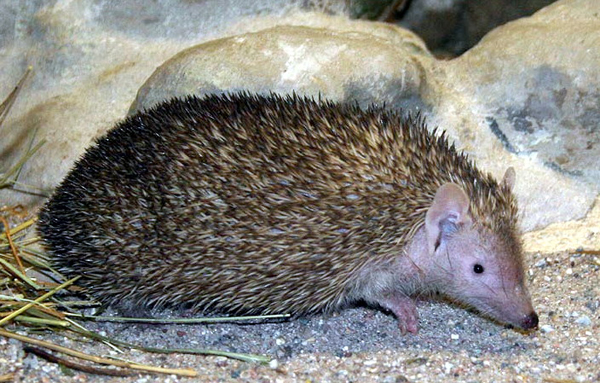By David Brown & Stuart Short*
KERSPLASH! Deep in the rainforests of Central Africa, a biologist sees an animal that looks like an otter dart into a stream. It has a brown body and a white belly like an otter. It swims like an otter by moving its long, flat tail through the water.
It is not an otter though.
What is this otter imposter? It is a giant otter-shrew.
It is not an otter, and it isn’t a shrew either! The otter-shrew is a tenrec. Most tenrecs live on the island of Madagascar off the coast of Africa. A few species of tenrecs, the otter-shrews, live in Africa. Tenrecs have an amazing diversity of shapes and lifestyles. There are tenrecs that look and live like hedgehogs, moles, shrews, and otters.

Julie DeWilde is a wildlife biologist. She looked for otter-shrews along rivers in the rainforests of the Congo Republic in Central Africa. She and a team of other biologists were doing a study called a survey to see what kind of animals live along the river.
Giant otter-shrews are very secretive animals. Very few scientists have seen them.
How do you look for an animal like the giant otter-shrew that doesn’t want to be found? “We first check out different places to look for signs like footprints, burrows, or feces [poop]. The help of local hunters was essential to guide us with that” says Ms. DeWilde. “I then set up camera traps along shallow rivers in the deep forest where we noticed signs of giant otter-shrews.” Camera traps are cameras that automatically take a picture when an animal moves past them.
Ms. DeWilde and her team found signs of otter-shrews at five different places along the river. They then walked along the river to try and see the actual animal. “During the whole survey, the giant otter-shrew was seen three times by the team. I had the chance to observe it once, by night, swimming very fast and then quickly hiding under a tree trunk”, says Ms. DeWilde. “We set up camera traps around the area, but couldn’t get a photograph.
Why would Ms. DeWilde and her team go to all of this trouble to find giant otter-shrews? Otter-shrews spend much of their time in the water and they eat fish, frogs, and insects that may absorb pollution in the water. “Otter-shrews are good indicators for water pollution and thus very important,” says Ms. DeWilde. An indicator is a species that tells scientists whether a river in an area is polluted. If otter-shrews are not found in a river then it may mean that the animals that it eats have been wiped out by pollution.
Nobody knows much about how otter-shrews raise their young or how long they live. “We still have a lot to discover about this species,” Julie DeWilde explains. Hopefully someday scientists will learn much more about the otter imposter living deep in the African rainforests.
*This article previously appeared on kidsnews.mongabay.com






